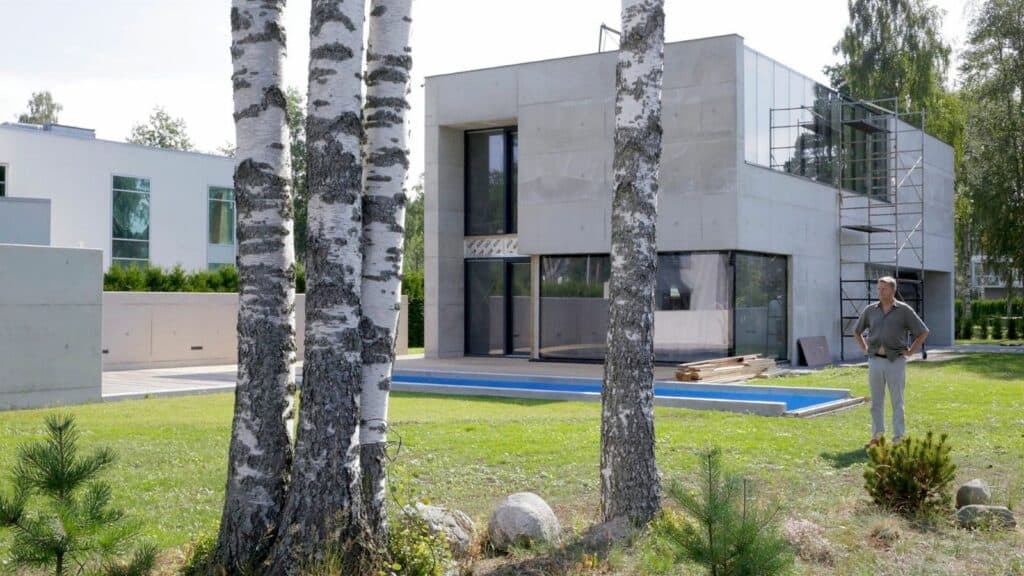I Was Born in a Garage is a documentary about the iconic Estonian architect Emil Urbel. It was directed by Arko Okk and shot in 3D. The film is described as a psychological portrait of a top Estonian architect, Emil Urbel and the current state of the Estonian architectural landscape through the eyes of an independent creator. The director’s statement claims, “This is not a classic portrait of an architect, as the architect has no more right to speak than the filmmaker. It’s rather the space created by the architect, in which we walk, that speaks for him.” We are clearly dealing with an ambitious project here. The question is if the finished work echoes those ambitions.
What is a House?
The operative word in the director’s quote above is space, which is one of the most obvious parameters in architecture and should be in cinema as well, even though it feels like that’s an aspect that has been largely forgotten. The bulk of the film is Urbel walking the director and us through projects he has been involved in. What is striking is that while he is happy to philosophise about his own buildings, including compromises and pragmatic solutions, he is less keen to give precise answers to more over-arching questions. This approach, in fact, feels refreshing in an era where all too many people make glib, sweeping statements.

I Was Born in a Garage 3D
Last year, PÖFF screened the Lithuanian Twittering Soul in 3D, and the curator of the Baltics Competition programme, Edvinas Pukšta, said that both films display 3D usage not for cheap entertainment purposes. While the 3D technique was said to be the future years ago, even for home viewing, the interest appears limited for the time being. (who knows about the future?). Personally, I’ve never found much use for the approach, with two glorious exceptions: Adieu au langage (2014) and Long Day’s Journey Into Night (2018). That being said, Okk’s method is now without merits, not least considering the topic where the concept of space is instrumental. The director uses an original dual-lens 3D camera, often to great effect.

Another method that, superficially at least, is akin to the aforementioned Godard is the way words from Urbel’s discourse are projected onto the foreground of the screen. Still, the approach is more reminiscent of Greenaway than Godard and doesn’t necessarily add much to the film. It still works as an example of the director’s quirky outlook on the project. Okk, occasionally (no pun intended) also inserts scenes from his fiction film The Highway Crossing (1999), which starred Urbel. The film won the FIPRESCI prize at the Stockholm Film Festival the same year. The director has labelled I Was Born in a Garage as a fake documentary, leading one critic to acidly dub it a “fake film”.
That is far from the truth. At 65 minutes, the film doesn’t outstay its welcome, and the director and the architect provide aural as well as visual food for thought. It also provides an insight into the structure of Tallinn. It’s a city of surprises where you might actually find a bar in a garage. Coincidentally, the day after I watched the film, I participated in a city walk that included locations from the shooting of Stalker (1979) and Tenet (2020). The walk, hosted by an excellent guide, provided a fascinating perspective of the city.
I Was Born in a Garage had its world premiere in the Baltic Film Competition at the Black Nights Film Festival.

